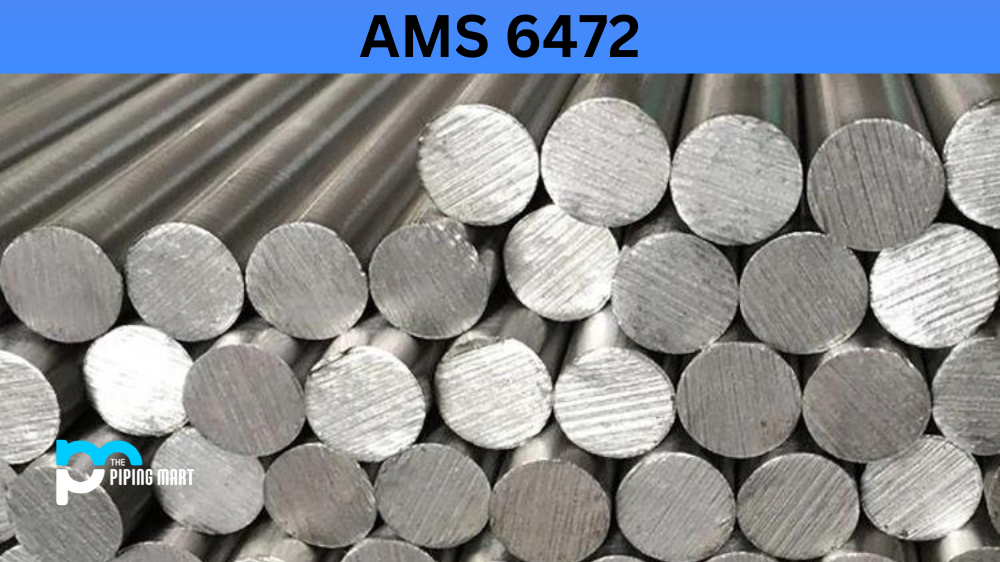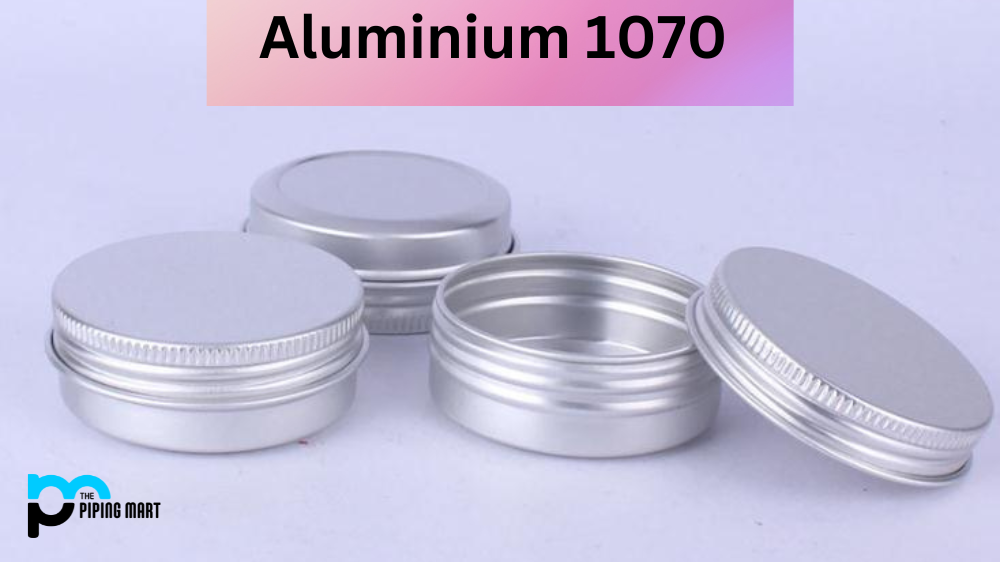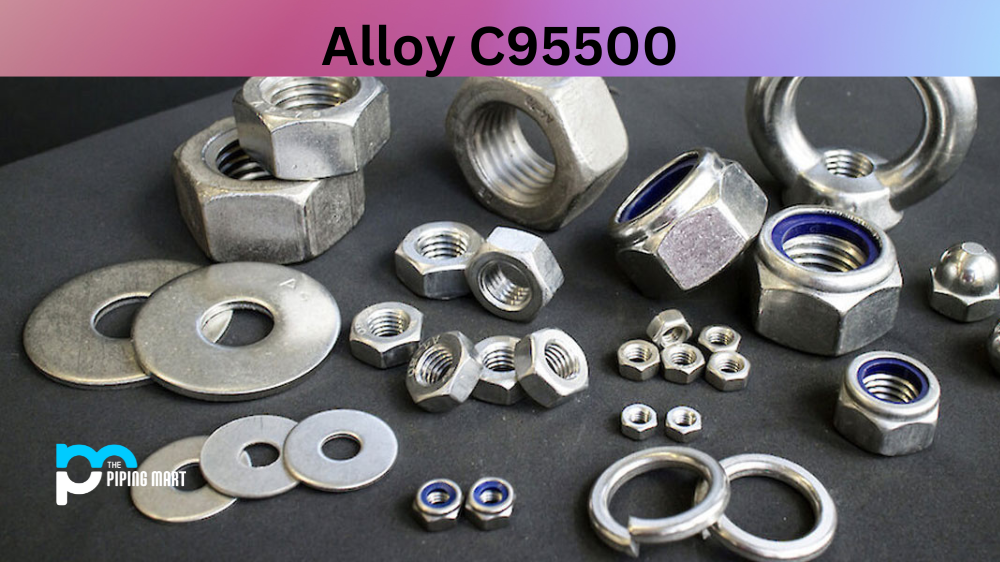In today’s world of advanced technology, it is essential to understand the properties and uses of different materials used in engineering and manufacturing. AMS6472 is an alloy steel widely used in many industries, including aerospace, oil and gas, and automotive. This steel is known for its high strength, durability, and wear and tear resistance, making it ideal for harsh environments. This blog post will delve into the details of AMS 6472, its composition, physical and mechanical properties, and applications.
What is AMS 6472?
AMS 6472 ( also known as Nitralloy 135 Alloy) is a metal specifically engineered to meet high-intensity, high-temperature requirements. It is a premium-grade alloy steel with exceptional strength and durability, making it an ideal material for use in critical applications across various industries. What sets AMS6472 apart from other metals? Its unique combination of high-temperature resistance and superior mechanical properties, including outstanding hardness and fatigue resistance. Whether you’re designing aircraft components, oil rig drilling equipment, or high-performance automotive parts, AMS6472 is a metal that can truly deliver under extreme conditions. So if you’re looking for a metal that can withstand the toughest challenges, AMS 6472 should be on your radar.
AMS 6472 Composition
AMS 6472 is a low-alloy steel that contains small amounts of carbon, nickel, and chromium. Its composition also includes molybdenum, which enhances its strength and corrosion resistance. The steel is produced via vacuum melting, where the raw materials are molten in a vacuum furnace. This process ensures the removal of impurities and helps achieve a uniform composition.
| Element | % Content |
| Carbon | 0.40 |
| Manganese | 0.60 |
| Silicon | 0.30 |
| Chromium | 1.60 |
| Molybdenum | 0.35 |
| Aluminum | 1.20 |
AMS 6472 Physical Properties
AMS 6472 has a density of 7.85 g/cm³, slightly higher than carbon steel. It has a melting point of around 1420°C and a thermal conductivity of 44.5 W/m.K. The coefficient of thermal expansion for AMS 6472 is approximately 10.3 x 10^-6 /°C, which means that it expands when heated and contracts when cooled. The alloy also exhibits good magnetic properties and has a Curie temperature of around 760°C.
| PHYSICAL PROPERTIES | ||||||
|---|---|---|---|---|---|---|
| Density (lbs/cubic in) | Electrical conductivity (% IACS) | Thermal conductivity (BTU-in/hr-ft²-°F) | Specific heat capacity | Thermal expansion (1/°F) | Melting Point (°F) | |
| 0.297 | – | – | – | – | – | |
AMS 6472 Mechanical Properties
AMS 6472 has excellent mechanical properties, including high tensile strength and hardness, good ductility, and toughness. The steel has a yield strength of 900 MPa and a tensile strength of 1100 MPa. These properties make it suitable for use in high-stress applications. The alloy also has a low coefficient of friction, which reduces wear and tear and enhances its durability.
| MECHANICAL PROPERTIES | |||||||||
|---|---|---|---|---|---|---|---|---|---|
| PROPERTY | MINIMUM | MAXIMUM | |||||||
| Yield Strength Range (Rp0.2 Offset) (ksi) | – | – | |||||||
| Tensile Strength Range (Mpa) | 760 | 930 | |||||||
| Elongation | 50% | – | |||||||
| Hardness (HBW) | 280 | 340 | |||||||
| Modulus of Elasticity (ksi) (E): – | |||||||||
| Machineability General Index: – | |||||||||
AMS 6472 Uses
AMS 6472 finds its application in several industries, including aerospace, oil and gas, and automotive. It is commonly used to manufacture aircraft landing gear, transmission shafts, gears, and other high-stress components. The alloy’s excellent wear resistance and toughness make it an ideal material for making bearings, bushings, and other moving parts in machines.
AMS 6472 Hardness
The hardness of AMS 6472 is around 350 Brinell, which is considerably higher than that of mild steel. This makes the steel highly resistant to deformation, wear, and fatigue and can withstand extreme environments without losing its properties. The hardening of AMS 6472 is achieved by quenching and tempering, which involves heating the steel to a specific temperature and cooling it rapidly to achieve the desired hardness level.
AMS 6472 Heat Treatment
Heat treatment plays a crucial role in determining the properties of AMS 6472. The steel is subject to different heat treatment processes, such as annealing, normalizing, quenching, and tempering, to achieve the desired strength, toughness, and hardness. Annealing involves heating the steel at a specific temperature to soften it and improve its ductility. Normalizing is when the steel is heated and cooled in the air to improve its mechanical properties. Quenching and tempering is a heat treatment process where the steel is first heated to high temperatures and then rapidly quenched in a cooling medium, such as oil or water, to achieve high hardness. Tempering follows, where the steel is heated to a specific temperature and held there for a specific duration to reduce brittleness and improve toughness.
Conclusion:
AMS 6472 material is a highly versatile low alloy steel widely used in several industries, such as aerospace, oil and gas, and automotive. Its high strength, durability, and resistance to wear and fatigue make it an ideal material for manufacturing high-stress components and moving parts. By understanding the composition, physical, and mechanical properties of AMS 6472, manufacturers can select the right heat treatment processes to achieve the desired level of properties. In conclusion, AMS 6472 is a reliable material that can withstand extreme environments and be an asset to many industries.

Meet Bhavesh, a seasoned blogger with a wealth of knowledge and experience. From metal products manufacturing to retail, Bhavesh has a diverse background in various industries and is dedicated to sharing his insights and expertise with readers.




